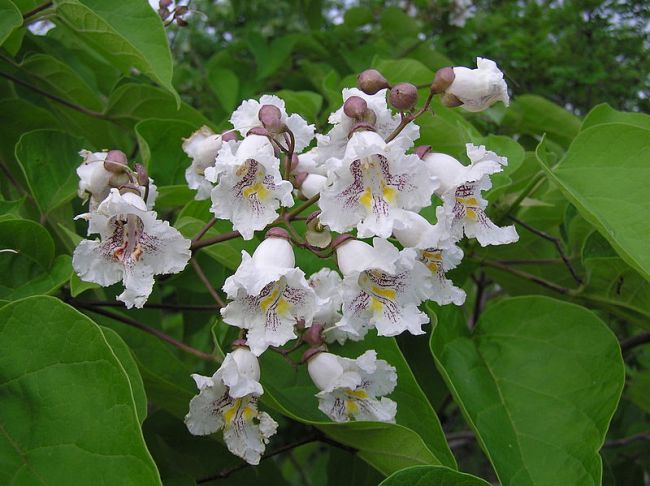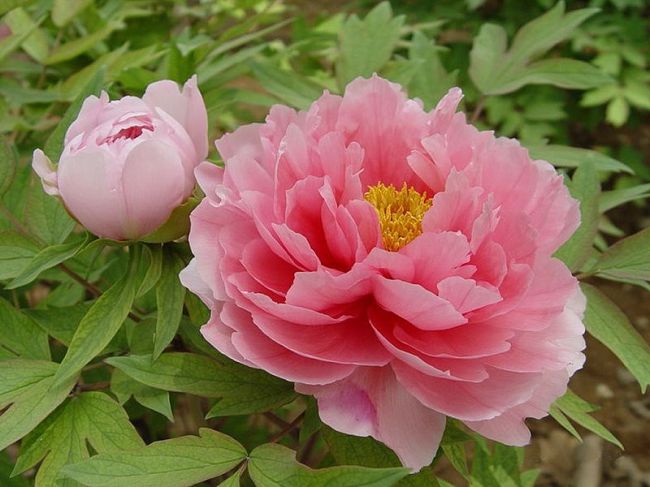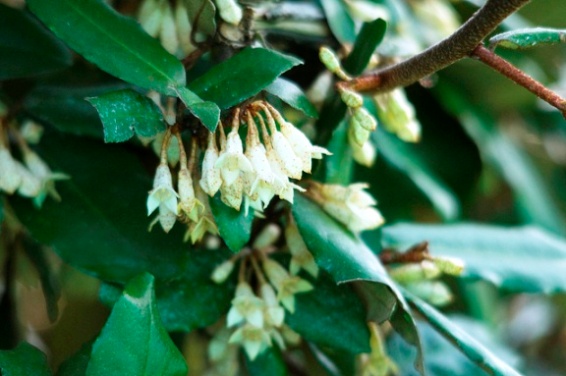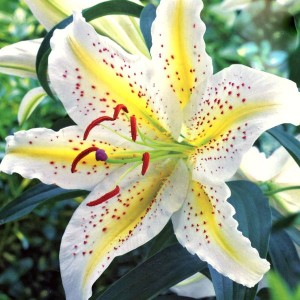
Lilium auratum. A.D. Dyachenko. http://www.botansad.com.ua
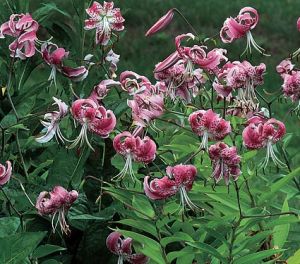
Lilium speciosum. http://www.whiteflowerfarm.com.
The best known lilies used in making hybrids are undoubtedly Asian species. Two of the best lilies that have been used in hybridizing are the goldband lily (L. auratum) and Japanese lily (L. speciosum) of Japan. While others have certainly been used in the great variety of hybrids, these two are used to make many of the Oriental hybrid crosses, particular the one that brought ‘Stargazer’ to the gardening world. While there are many stargazer lilies on the market (so called because the lilies used in the crosses left the hybrids with a tendency to flower facing up at the sky) the resemblance with L. speciosum is uncanny for good reason.
The goldband lily of Japan is a beautiful lily of its own accord, sporting a bright gold band in the middle of each petal and brown spots (related var. platyphyllum lacks the brown spots.) The petals gently curl as well and are very large for the species. This is one of the taller and more floriferous lilies, growing to eight feet tall and containing as many as twenty flowers at a time! This is a midsummer bloomer with a strong lily scent (it lends this scent to the benchmark Oriental hybrid scent.)
The Japanese lily blooms later than many others (in August and September) but this lily in particular is the parent most responsible for the beloved Oriental hybrids. This lily is native to the mountains in central Japan, and grows up to about four feet tall. Not as floriferous or large as the goldband lily, it is white to pink in color, and wonderfully scented as well. The standard form is more floriferous than the hybrids, but with smaller flowers and less fragrance.
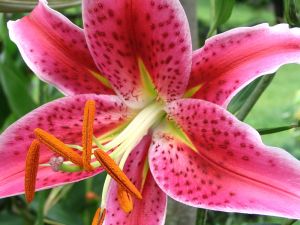
Lilium ‘Stargazer‘. 20 May 2006. Skarg. Wikimedia Commons.
As said before, these two species are responsible for the most part for ‘Stargazer,’ and its coloration and form is the tale of the hybridization. Its flower is a brilliant pink with noticeable darker bands running along the middle of the petals and spots, like its parent in L. speciosum; but its upright form and flowering period is similar to L. auratum. Stargazers tend to grow to be between four and five feet tall, with 5-6 flowers on the stalk.They are the easiest lily bulbs to grow in the garden, requiring well-drained acidic soil, and are hardy from zones 5-9. I daresay no garden should be complete without one
The stargazer fragrance is the benchmark I use in comparing other lilies. Its warm, sweet, and musky. The scent seems to combine Jasmine, lemon, and Asian Magnolia with a definite musk undertone. Its a sultry scent perfect for summer that makes its presence known in a room! What else can be said of the lily fragrance aside from magnificent? Now if only they can make new hybrids without the stamens all would be perfect (the pollen on the stamens is horribly staining and deathly toxic to cats.)


